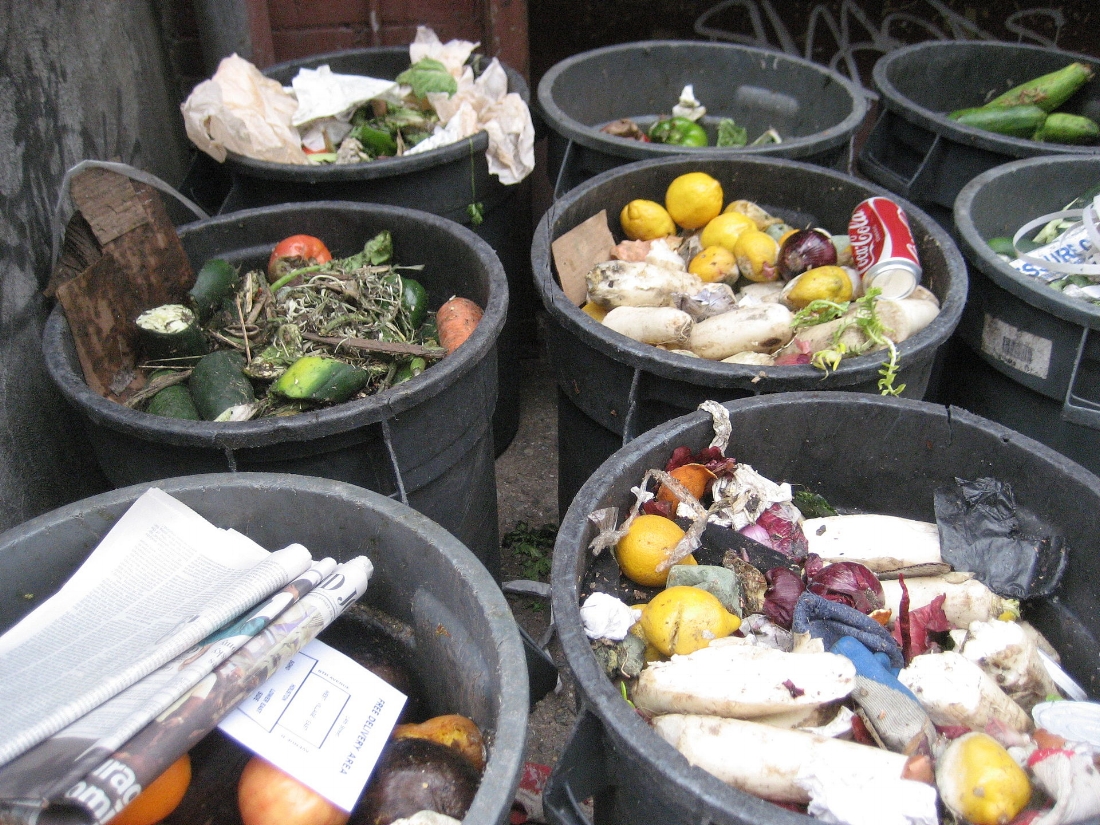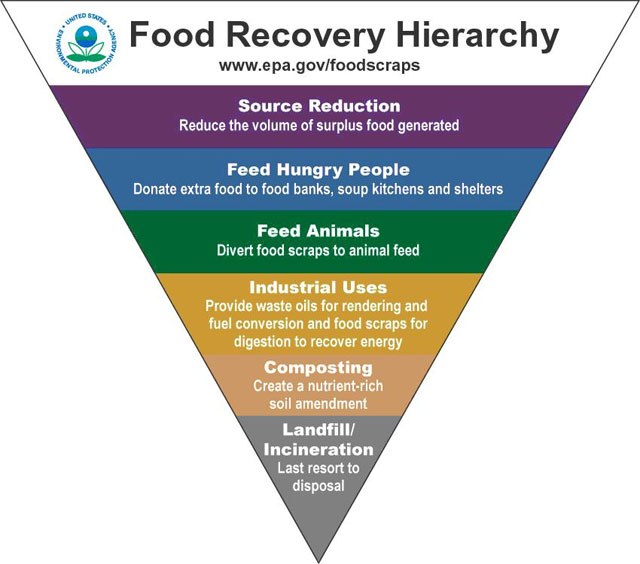Beyond “Best By” – MOM’s Organic Market CEO Ate Expired Food for a Year
Photo: Pexels
Originally appeared in Presence Marketing News, July 2019
By Steven Hoffman
“I mean, I ate heavy cream I think 10 weeks past date, and then meat sometimes a good month past its date. It didn’t smell bad. Rinse it off, good to go,” Scott Nash shared with the Washington Post in a June 18, 2019, interview. Nash is the founder and CEO of MOM’s Organic Market based in Rockville, MD, with 19 stores in four Eastern states. According to the Post, Nash consumed yogurt months after the expiration date printed on the label, and tortillas a year past their expiration date. It was all part of his year-long experiment to test the limits on food that had passed its expiration date. Nash blogged about that experiment in February 2019.
Of course, you can get very sick eating expired food, but more often than not we're throwing away food that is perfectly safe to eat. Some foods, such as deli meats, unpasteurized milk and cheeses, and prepared foods like potato salad that you don't reheat, probably should be thrown away after their “Use By” date for safety reasons. However, in many cases, the Post reports, expiration dates do not indicate when the food stops being safe to eat; rather, they tell you when the manufacturer thinks that particular product will stop looking and tasting its best.
Why does it matter? A lot of good, safe food gets thrown away, generating unnecessary food waste in landfills and greenhouse gas emissions. The FDA estimates that we throw out a third of our food, worth $161 billion a year, and the agency believes that confusion over expiration dates may be contributing a significant portion of that waste, reported Popular Science.
In an effort to find a solution for clearer package date labels, in 2017, the grocery industry, led by the Grocery Manufacturers Association and the Food Marketing Institute, announced a voluntary standard on food-date labeling. Together, they narrowed a number of date-label terms down to two: "Best if Used By" and "Use By." "Best if used by" describes product quality, meaning that the product might not taste as good past the date but is safe to eat. "Use by" is for products that are highly perishable and should be used or disposed of by that date.
To help dispel confusion, the FDA announced on May 23, 2019, that it is supporting the food industry’s efforts to standardize the use of the term “Best if Used By” on its packaged food labeling “if the date is simply related to optimal quality – not safety,” said the agency in a statement. Studies have shown that this best conveys to consumers that these products do not have to be discarded after the date if they are stored properly, the agency said. “We expect that over time, the number of various date labels will be reduced as industry aligns on this ‘Best if Used By’ terminology,” said Frank Yiannas, FDA Deputy Commissioner for Food Policy and Response. “This change is already being adopted by many food producers.”
When it comes to food safety, the FDA said that manufacturers can put whatever terminology they want to convey health risk. While the FDA is encouraging manufacturers to use "Best if Used By" terminology as a best practice, it is not required by law. There is no federal law that requires dates on food, except for infant formula, which is required to bear a “Use By” date, reports the FDA. Other industry experts have suggested using language that indicates shelf life after opening or the date when the product was packed.
“They’re trying to bring clarity to the descriptor of the date,” MOM’s Organic Market’s Scott Nash said. “OK, that’s great, that’s better than what we have now. But I think some things just shouldn’t be dated.”
FDA advises consumers to routinely examine foods that are past their “Best if Used By” date to determine if the quality is sufficient for use. “If the products have changed noticeably in color consistency or texture, consumers may want to avoid eating them,” FDA advises. FDA also developed a FoodKeeper App for Apple and Android phones, designed to promote understanding of food and beverage storage to maximize freshness and quality.
FDA says its efforts are part of a White House initiative called Winning on Food Waste, a collaboration between the FDA, USDA and the Environmental Protection Agency to educate consumers on ways to reduce food waste and how to do it safely without risking illness from consuming spoiled food.
Learn More:
Winning on Reducing Food Waste
FDA Letter to Food Industry, May 23, 2019
FDA’s Food Waste and Loss Resource Page, May 23, 2019
Upcoming:
Southern Hemp Expo, September 6-7, 2019, Franklin, Tennessee – Learn about the exploding market for “all things hemp” – from bioplastics to CBD – at the second annual Southern Hemp Expo, the largest hemp exposition and conference in the Eastern U.S., featuring an investors summit, business conference, agriculture symposium and a full exhibition hall. Visit www.SouthernHempExpo.com. To exhibit, sponsor and for info, contact steve@compassnatural.com.
Grocers Act to Reduce Food Waste
Abundance and waste. They are two sides of the same coin in America, and that goes for our food system, too.
Source: Wikimedia Commons
“We educate team members and consumers to sort their trash and not just ‘throw it away,’ because there is no ‘away.’” - Tristam Coffin, Whole Foods Market
Abundance and waste. They are two sides of the same coin in America, and that goes for our food system, too.
According to Jonathan Bloom, author of Wasted Food, 40% of all food produced in the U.S. gets thrown away before it is consumed, and the vast majority of that (97%) ends up in a landfill, where organic food waste is one of the main culprits in methane gas production – a major contributor to global warming.
Each year, 160 billion pounds of food – the equivalent of $250 billion per year – is wasted, enough to fill the equivalent of two Rose Bowls every day, said Bloom, who spoke at the Sustainable Foods Summit held Jan. 22-23, 2013, in San Francisco, and produced by leading market research firm Organic Monitor.
With the planet’s population set to increase from 7 billion to more than 9 billion by 2050, it isn’t just a matter of increasing food production, but decreasing food waste as well as redistributing food to food banks. A number of grocers are taking steps to address this issue, including SuperValu, the third largest retailer in the U.S., which has achieved “zero waste,” or 90% diversion from the landfill, in 150 of its stores, said Michael Hewett, Director of Environmental and Sustainability Programs for Publix and a member of the Food Marketing Institute’s (FMI) Sustainability Executive Committee.
“As retailers pull cardboard, plastic, cans, etc., out of the waste stream, they are left with food,” said Hewett. “We must find ways to capture food before it goes bad and get it to food banks. From Ahold USA to Winn Dixie, grocers need to share best practices in a ‘pre-competitive’ way. That’s radical collaboration,” he said.
“Globally, one third of all food produced is wasted in processing, handling, storage, sale, preparation and serving of food,” said Amy Kirtland, Executive Director of Unified Grocers. Kirtland is working with grocers through the Food Waste Reduction Alliance, comprising members of FMI, Grocery Manufacturers Association and the National Restaurant Association, to divert and reduce food waste. Kroger is diverting organic waste to energy production, she said, while Hannaford educates children about food waste through a pilot composting project.
At Whole Foods Market, “We’re looking not for a ‘silver bullet,’ said Tristam Coffin, Whole Foods’ Energy and Maintenance Project Manager, so much as ‘silver buckshot,’ in that stores deal with food waste in region-appropriate ways.” For example, Whole Foods stores in St. Paul, MN, are working with a local farmer to divert food waste for hog feed; other stores work with farmers to supply food waste for compost. In Chicago, stores donate local produce waste to the Lincoln Park Zoo. “We educate team members and consumers to sort their trash and not just ‘throw it away,’ because there is no ‘away,’” he said.
With regard to donating food to food banks, the Bill Emerson Good Samaritan Food Donation Act, signed by President Clinton in 1996, helps reduce liability for grocers seeking to distribute food to food banks and the poor, said Claire Cummings, West Coast Fellow at Bon Appetit Management Co., a leading food service company working with universities and other institutions. “Our goal is to find ways to distribute 1 billion pounds of produce per year by 2015, and that includes making sure that food banks are prepared to take on additional capacity for donated foods ,” added Devi Raja, Director of Food Produce for Feeding America.



